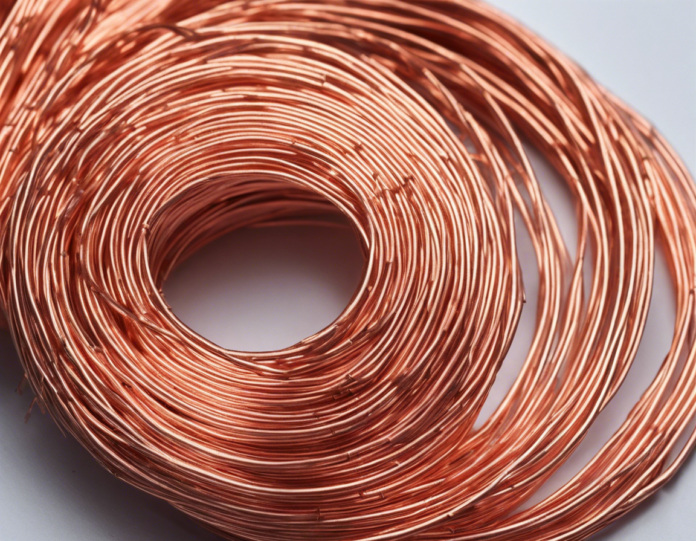Copper wire is one of the most commonly used materials in electrical and electronics applications due to its excellent conductivity and durability. When working with copper wire, it is essential to understand various aspects, including its diameter, which plays a crucial role in determining its electrical properties and suitability for specific applications. In this comprehensive guide, we will delve into the significance of the diameter of a 0.5mm copper wire, its implications, and practical considerations.
Importance of Diameter in Copper Wire
The diameter of a copper wire is a critical parameter that influences its electrical resistance, current carrying capacity, flexibility, weight, and cost. In electrical engineering and design, wires are available in various diameters, usually measured in either millimeters (mm) or American Wire Gauge (AWG). The diameter directly impacts the cross-sectional area of the wire, affecting its electrical resistance according to the formula R = ρL/A, where R is the resistance, ρ is the resistivity of copper, L is the length of the wire, and A is the cross-sectional area.
Understanding a 0.5mm Copper Wire
A 0.5mm copper wire refers to the diameter of the wire, where the diameter is 0.5mm or approximately 0.0197 inches. This measurement places the wire in the range of small gauge wires, suitable for low current applications or where space is limited. The 0.5mm diameter wire is commonly used in electronics for signal wiring, small transformers, inductors, and other miniature components.
Implications of Using 0.5mm Copper Wire
1. Current Carrying Capacity:
- The current carrying capacity of a 0.5mm copper wire is lower compared to thicker wires due to its smaller cross-sectional area. It is essential to consider the maximum current that the wire will carry to prevent overheating and electrical failures.
2. Voltage Drop:
- Smaller diameter wires have higher resistance, leading to increased voltage drop over longer distances. This can impact the performance of electrical circuits, especially in low voltage applications.
3. Flexibility:
- Thinner wires are more flexible and easier to bend and route in tight spaces. The 0.5mm copper wire is ideal for applications that require flexibility and maneuverability.
4. Heat Dissipation:
- With higher resistance, the 0.5mm wire may generate more heat when carrying current. Adequate heat dissipation measures should be considered to prevent overheating and melting of insulation.
5. Cost Considerations:
- Thinner wires are generally less expensive than thicker wires due to the lesser amount of copper used. However, the overall cost consideration should include factors such as installation complexity and long-term reliability.
Practical Considerations for Using 0.5mm Copper Wire
When selecting and using 0.5mm copper wire for your applications, the following practical considerations should be taken into account:
1. Current Ratings:
- Refer to manufacturer datasheets or industry standards to determine the maximum current rating for a 0.5mm copper wire based on the insulation type and application requirements.
2. Voltage Drop Calculation:
- Perform voltage drop calculations to ensure that the wire size is suitable for the application and that the voltage at the load meets the desired level.
3. Application Suitability:
- Evaluate the specific requirements of your application to ensure that a 0.5mm copper wire is adequate in terms of current carrying capacity, voltage drop, and mechanical durability.
4. Environmental Factors:
- Consider environmental conditions such as temperature, moisture, and potential exposure to chemicals that may affect the performance and lifespan of the wire.
5. Installation Techniques:
- Follow proper installation practices, including correct termination methods, bending radius limits, and protection against mechanical damage to ensure the longevity and reliability of the wire.
Frequently Asked Questions (FAQs)
1. What is the resistance of a 0.5mm copper wire?
The resistance of a 0.5mm copper wire can be calculated using the formula R = ρL/A, where ρ is the resistivity of copper, L is the length of the wire, and A is the cross-sectional area.
2. Can a 0.5mm copper wire carry high currents?
While a 0.5mm copper wire can carry currents, it is more suitable for low current applications due to its smaller cross-sectional area and limited current carrying capacity.
3. Are there any safety concerns when using 0.5mm copper wire?
Properly sized wires should be selected to ensure safety and prevent overheating. Always adhere to industry standards and guidelines for electrical installations.
4. What are the common applications of 0.5mm copper wire?
0.5mm copper wire is commonly used in electronics for signal wiring, small transformers, inductors, and other miniature components where space and flexibility are crucial.
5. How does the insulation of the wire affect its performance?
The type and quality of insulation used on the wire can impact its electrical properties, resistance to environmental factors, and overall durability in specific applications.
In conclusion, understanding the diameter of a 0.5mm copper wire is essential for choosing the right wire size that meets the electrical requirements, current carrying capacity, and environmental considerations of your applications. By considering the implications, practical considerations, and safety aspects, you can ensure the optimal performance and reliability of your electrical systems utilizing 0.5mm copper wire.


Recent comments